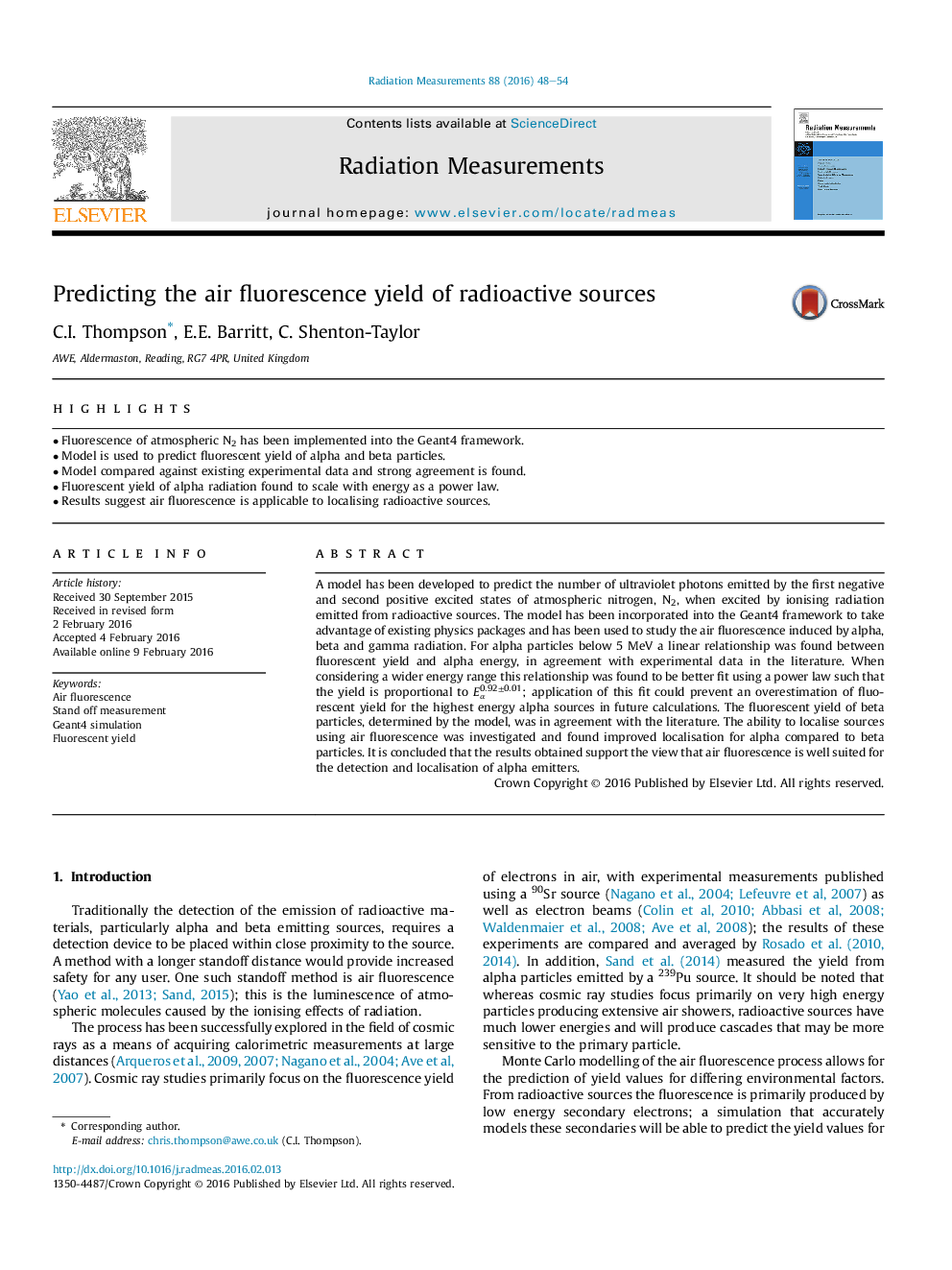| Article ID | Journal | Published Year | Pages | File Type |
|---|---|---|---|---|
| 1881189 | Radiation Measurements | 2016 | 7 Pages |
•Fluorescence of atmospheric N2 has been implemented into the Geant4 framework.•Model is used to predict fluorescent yield of alpha and beta particles.•Model compared against existing experimental data and strong agreement is found.•Fluorescent yield of alpha radiation found to scale with energy as a power law.•Results suggest air fluorescence is applicable to localising radioactive sources.
A model has been developed to predict the number of ultraviolet photons emitted by the first negative and second positive excited states of atmospheric nitrogen, N2, when excited by ionising radiation emitted from radioactive sources. The model has been incorporated into the Geant4 framework to take advantage of existing physics packages and has been used to study the air fluorescence induced by alpha, beta and gamma radiation. For alpha particles below 5 MeV a linear relationship was found between fluorescent yield and alpha energy, in agreement with experimental data in the literature. When considering a wider energy range this relationship was found to be better fit using a power law such that the yield is proportional to Eα0.92±0.01; application of this fit could prevent an overestimation of fluorescent yield for the highest energy alpha sources in future calculations. The fluorescent yield of beta particles, determined by the model, was in agreement with the literature. The ability to localise sources using air fluorescence was investigated and found improved localisation for alpha compared to beta particles. It is concluded that the results obtained support the view that air fluorescence is well suited for the detection and localisation of alpha emitters.
